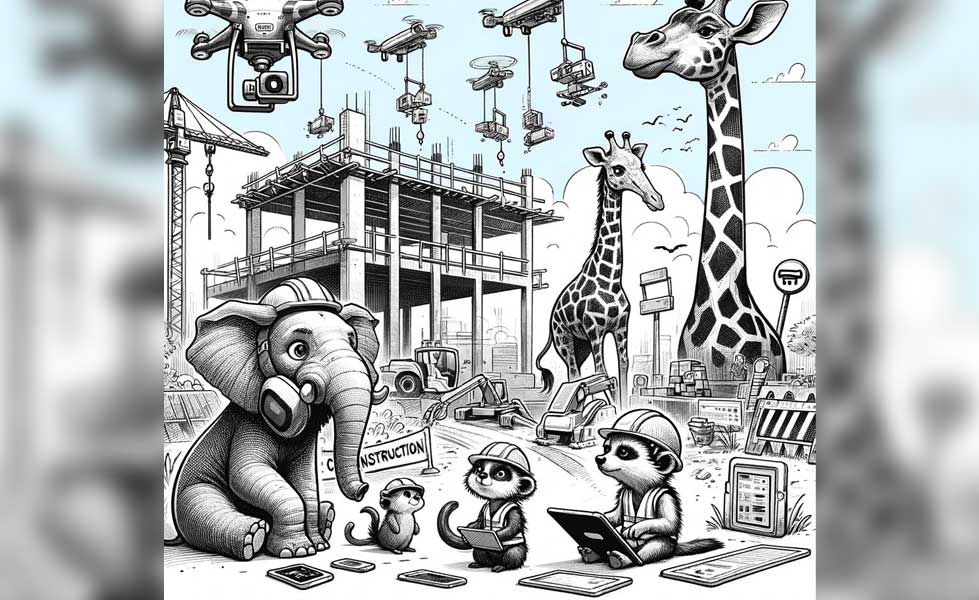In Kenya, the traditional ways of construction are slowly being overtaken by global trends such as 3D printing which has now moved from a novelty to an emerging industry standard. This newsletter provides a comprehensive overview of the implementation of technology innovations in the construction industry in Kenya, outlining its application, benefits, challenges, and the solutions being implemented to address these issues.
What is the state of the Tech construction industry in Kenya?
The construction industry in Kenya has only touched the tip of the iceberg when it comes to the implementation of the technologies available for the construction of buildings and structures. There exists a gap in the infrastructure available and the skilled labour present to handle and operate the software input in the machines. Therefore, this lack of skilled labour has slowed the progression of the technology used in Kenya.
The learning institutions are also slow in taking up the educational role of transforming the industry by remaining set on the more traditional methods within the curriculums of engineers and construction professionals.
Application of the available technologies
Despite the lack of skilled labour, Kenya is taking steps to adopt some of the technologies available. A more popular innovation edging its way into the industry is 3D printing. 3D printing which is also known as additive manufacturing, is an innovative process of creating three-dimensional objects from Computer-Aided Design (CAD) models. It can be used to print parts, fixtures, and furniture for your building. Another hot topic innovation in Kenya is BIM (Building Information Management) which is a highly collaborative process that allows architects, engineers, real estate developers, contractors, manufacturers, and other construction professionals to plan, design, and construct a structure or building within one 3D mode. Robotics are also slowly being adopted into the industry.
Legislative Framework
The National Construction Authority, governed by the National Construction Authority Act, 2011 is the primary body responsible for regulation of the construction industry and coordinates its development. The Authority establishes guidelines for construction practices and seeks to enforce environmentally sound methods used in the industry. Local county governments also have by-laws that manage how construction is done within their localities.
Advantages of Technology Use in Construction
The advantages technology has brought with it to the construction industry in Kenya are manifold:
- Improved Precision and Accuracy: Technology is programmed to high performance with low chances of error. Consequentially, this improves the safety of workers during construction and the safety of future occupants of buildings.
- Accelerated Completion of Projects: Building projects are notorious for delays hence technology is set to mitigate this issue by working efficiently and at the same time just as fast which ensures that projects with tight deadlines are completed which inevitably saves costs of construction.
- Creation of more intricate customized structures: Intelligent building designs are now within reach and can be executed by the robotic aids available. Artificial intelligence and machine learning can more accurately execute the needs of developers and professionals in the industry.
Solutions to Improve the Use of Tech Innovations in Construction
Addressing these challenges requires a multifaceted approach:
- Investment in Infrastructure: With increased urbanization, the government should diligently tend to the public infrastructure such as power. transportation and sewage to ensure that technologies are sustained and efficiently in operation without risks of outward interference.
- Enhancing Public Education and Engagement: Programs aimed at educating the public about the benefits of technology in the industry and education on how to use the technology and machinery available.
- Adoption of Good Machinery into the industry: By integrating good machinery into the industry that does not cause delays due to malfunctions, the public and professionals involved will be more encouraged to use these innovations.
Conclusion
Kenya continues to urbanize at a rapid rate, increasing the need for proper housing and more efficient structures. This current government regime has tasked itself with providing affordable housing which is set to be established soon before time lapses for its implementation. Such projects and infrastructure require quick execution which can be greatly aided by the use of technology innovations used all around the globe. The sooner Kenya catches up, the sooner the industry shall reap the benefits of innovation.
Disclaimer:
Please note that the information provided in this article is for general informational purposes only and should not be construed as legal advice. It is always advisable to consult with a qualified legal professional to discuss your specific circumstances and obtain tailored legal counsel.





